Info
Subfamily: Panicoideae
Genus etymology: Schizachyrium = "split chaff" [Greek] refering to the bifid upper lemmas
Species etymology: microstachyum = "small spike" [Greek] refering to the small spikelets
Photosynthetic type: C4 (warm season)
Nativity: naturalized - accidental
First recorded in Hawaiʻi: 1961
Map

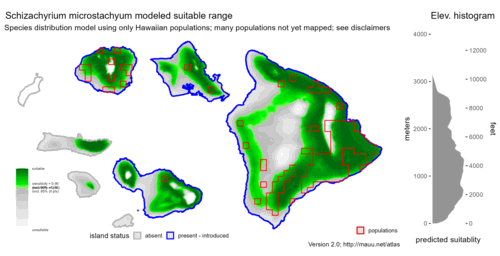
Inflorescence
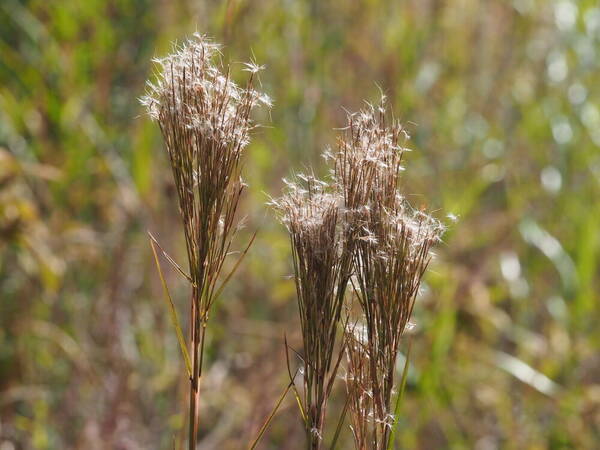
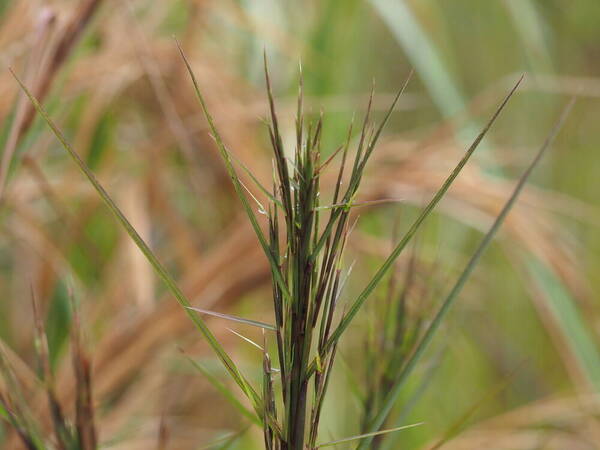
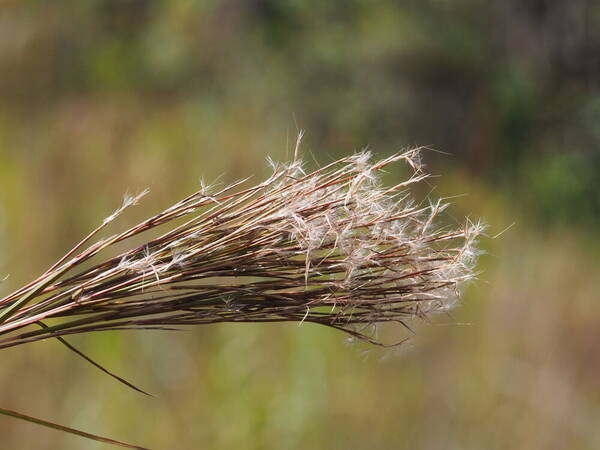
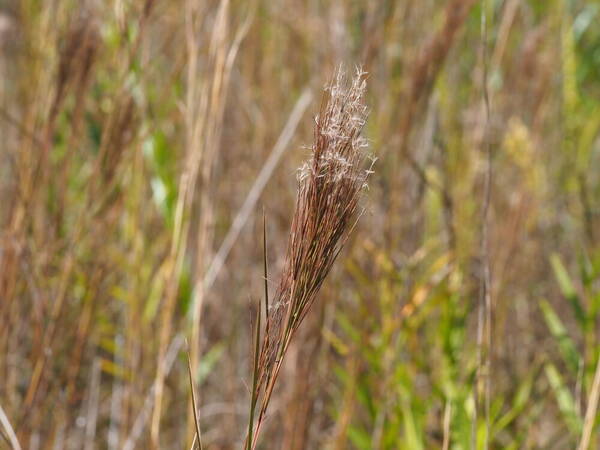

Plant
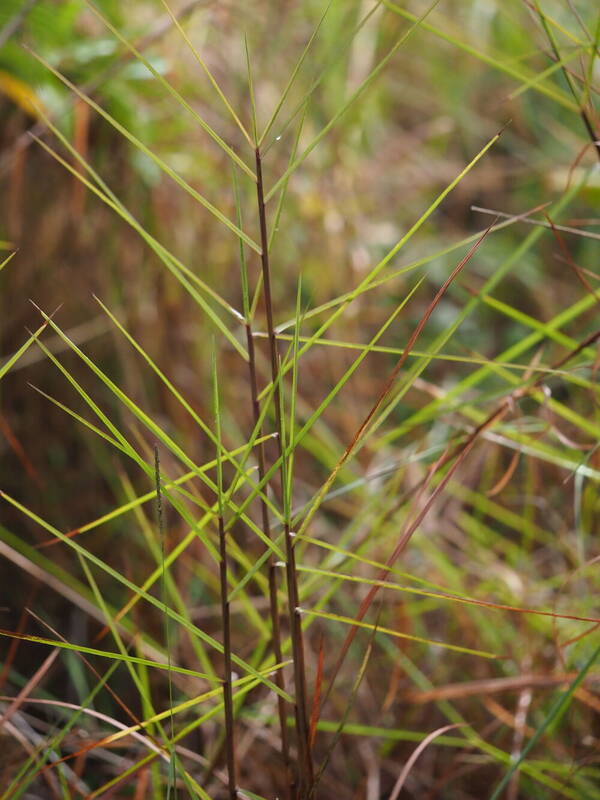
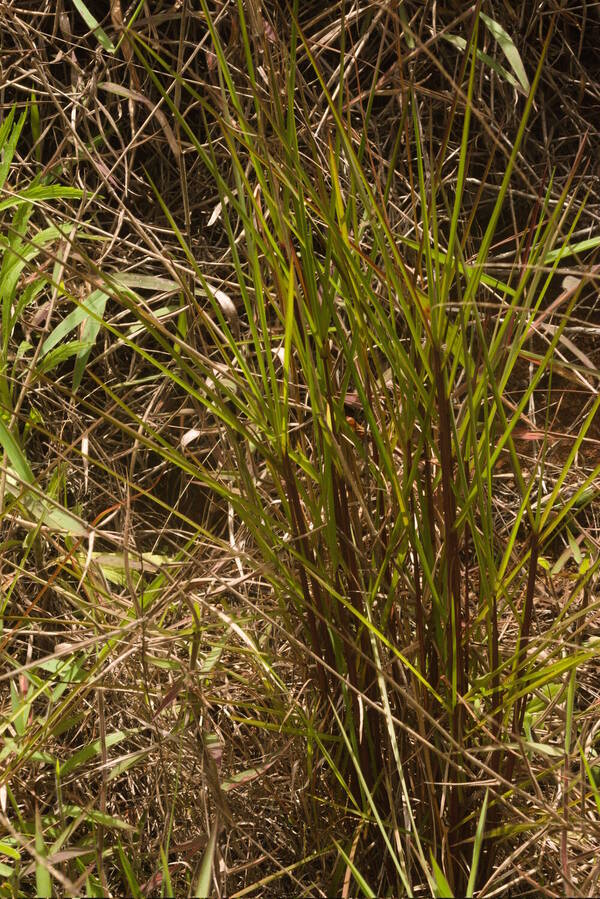
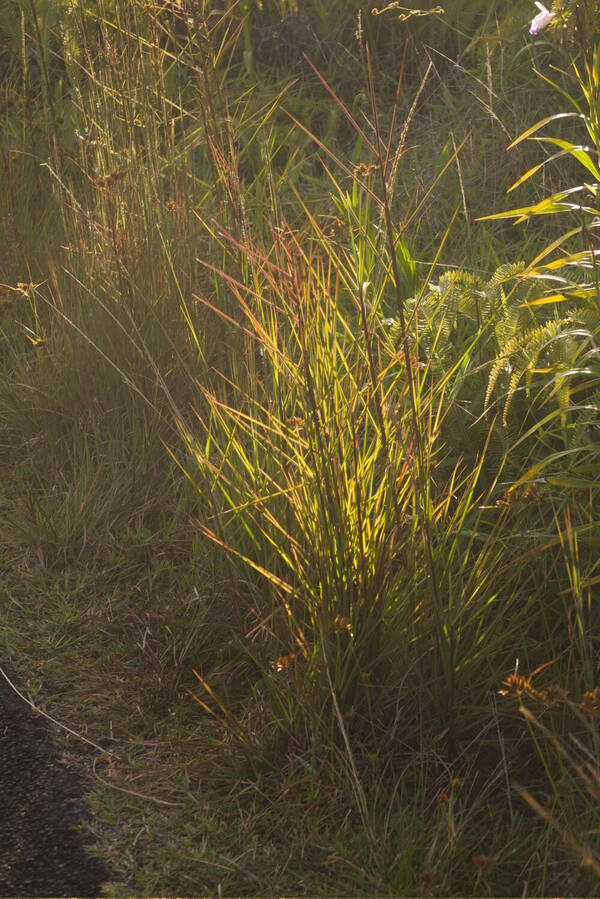
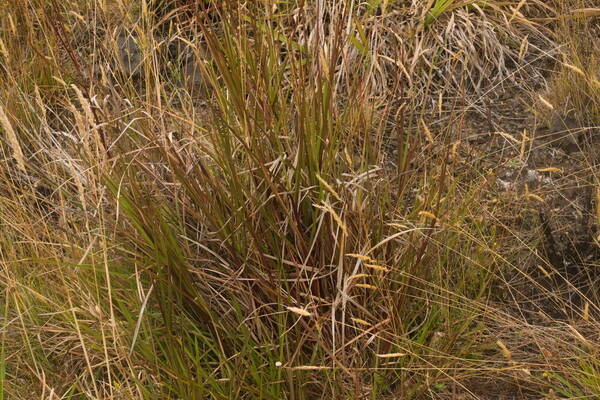
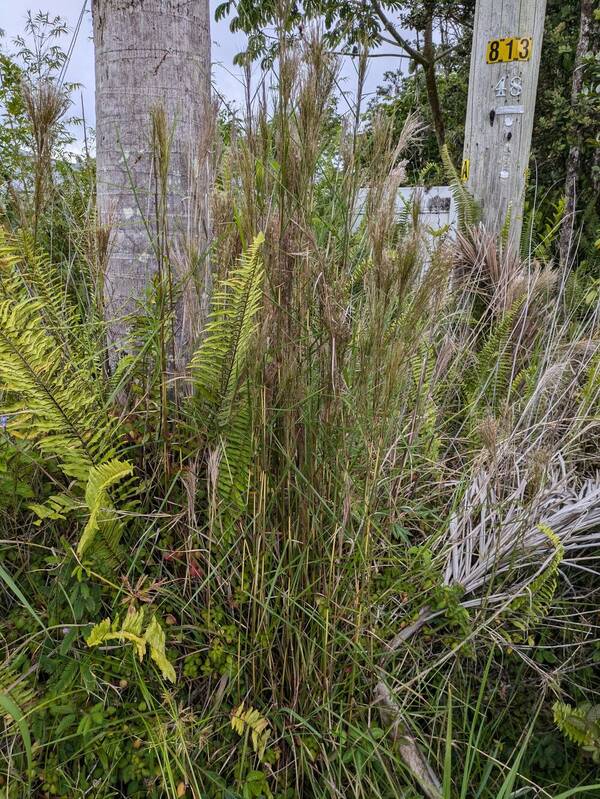
Habit
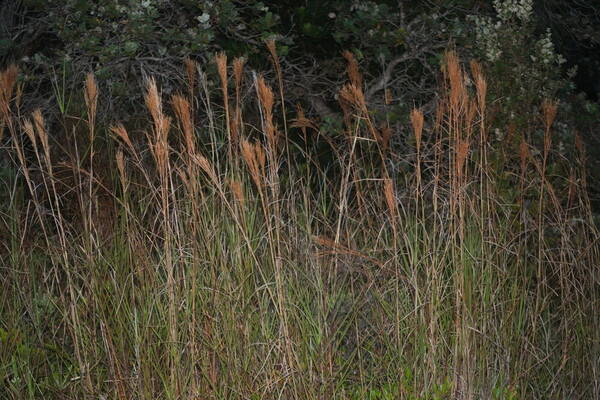
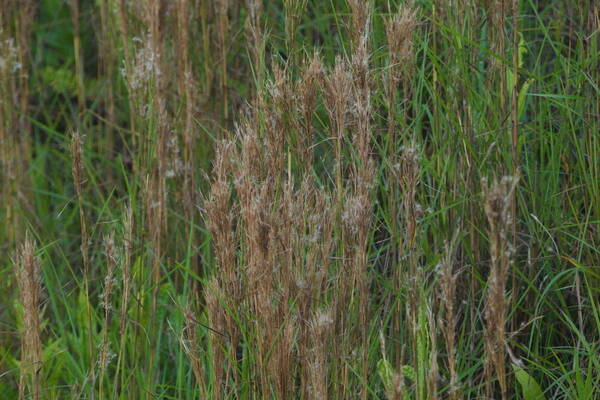
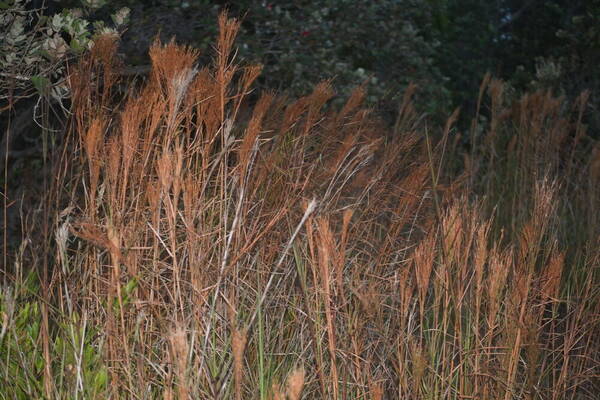
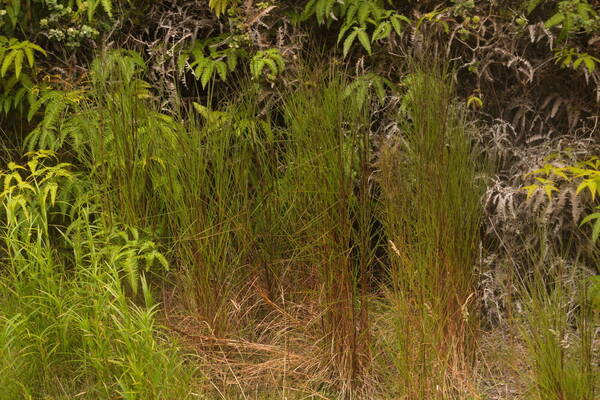
Spikelets
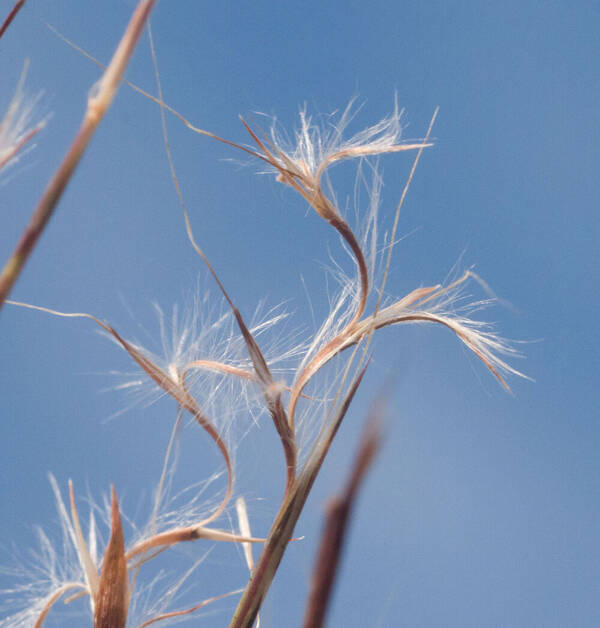
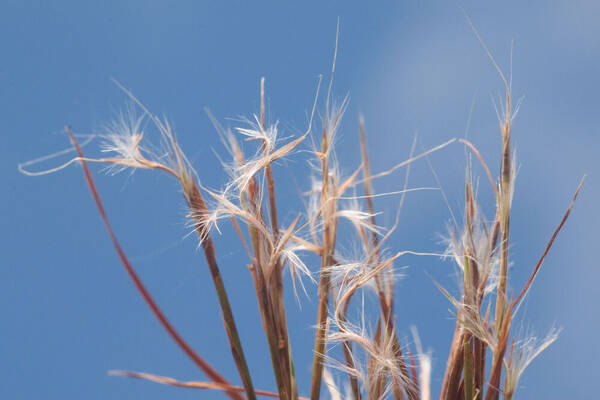
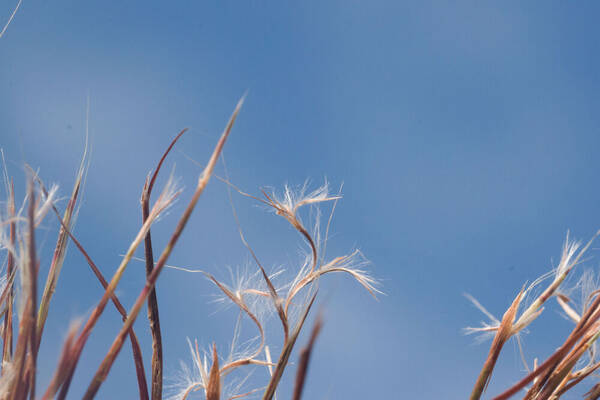

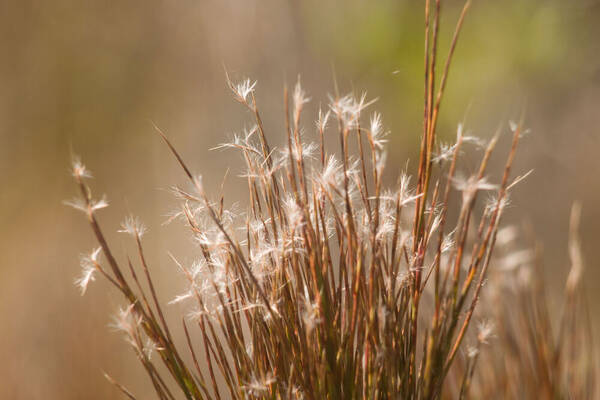
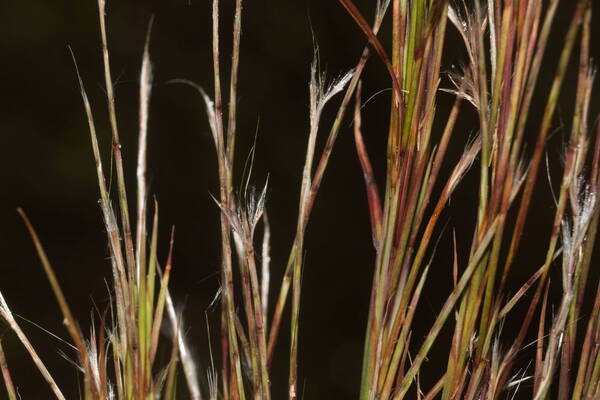

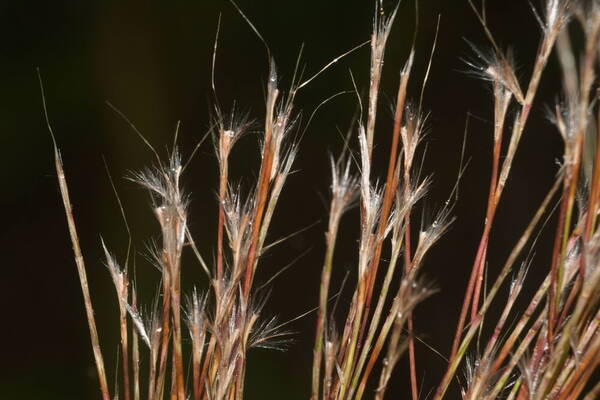
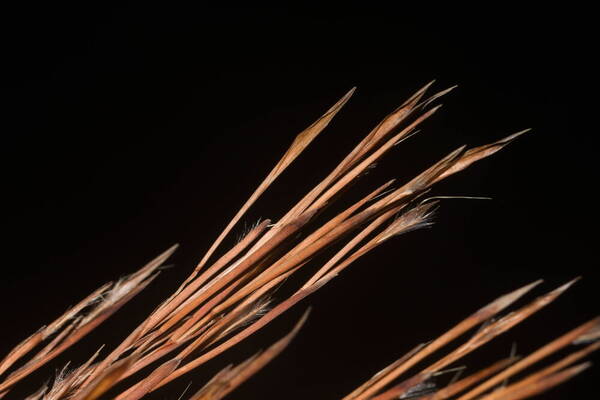
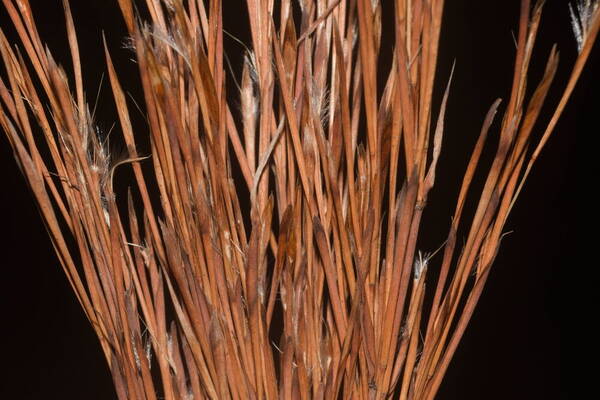
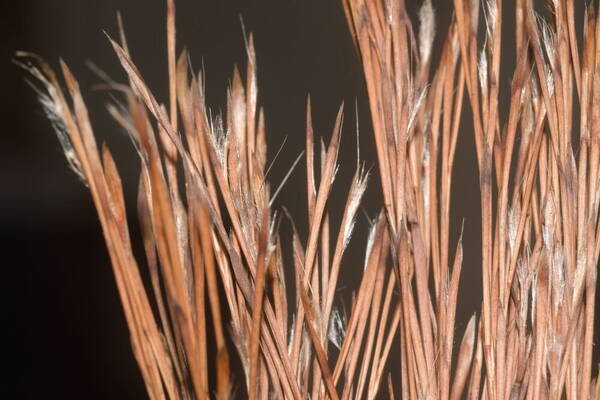
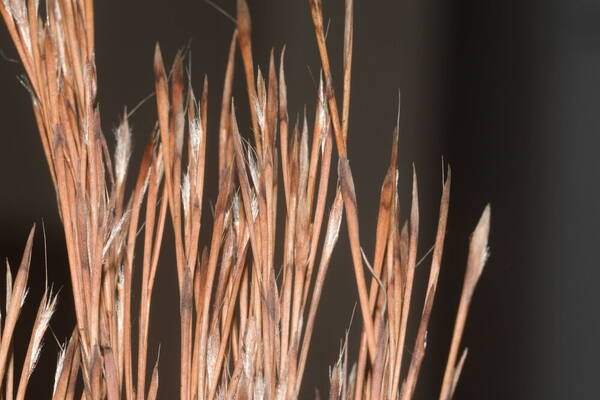

Landscape

Description
Perennials; culms tufted, erect, 9-15 dm tall, unbranched in lower part, repeatedly branching above into a compound inflorescence, internodes 2-3.5 mm in diameter, glabrous, broadly elliptic in cross section, filled with white or pinkish pith, nodes inconspicuous, glabrous. Sheaths keeled, glabrous, rarely sparsely puberulent; ligule a firm membrane, 0.7-2 mm long, adnate to sheath margins; blades up to 40 cm long, 3-8 mm wide, glabrous, lower surface keeled, occasionally with a few hairs at throat. Inflorescences loose, composed of numerous solitary racemes subtended by spathes, 20-40 cm long, 3-8 cm wide, branched in upper part, peduncles 2.5-6 cm long, with up to 8 spikelet pairs, individual racemes on slender branches, spathes involute or flattened, somewhat concealing the lower spikelet pairs, 15-35 mm long, rachis internodes 4-6 mm long, widened upward, conspicuously ciliate on the edges, pedicels 3.6-5.5 mm long; sessile spikelets narrowly ovate, 4.5-5 mm long, callus blunt, minutely bearded, hidden by the hollow apex of the rachis internode, glumes subequal, as long as the spikelet, first glume slightly convex on the back, with 2 submarginal keels, apex slightly bidentate, second glume slightly shorter than first glume, I-nerved, strongly keeled, the keel scabrous, first lemma 3.2-3.8 mm long, hyaline, ciliolate on the margins, apex acute, second lemma hyaline, apex deeply bifid, ciliolate, awned, the awn dark brown and strongly twisted below, the exserted portion above the bend straight or loosely twisted, ca. 10 mm long, palea absent; pedicellate spikelet sterile, usually 1-2 mm long, awn straight, up to 2 mm long. Caryopsis amber, linear-cylindrical, 2.5-2.8 mm long. [2n = 20.]
(Description source: O’Connor, P.J. 1990. Poaceae, pp. 1481–1604. In: Wagner W.L., Herbst D.R. & Sohmer S.H. (eds.)., Manual of the flowering plant of Hawaiʻi. Vol. 2. University of Hawaii Press & Bishop Museum Press, Honolulu )